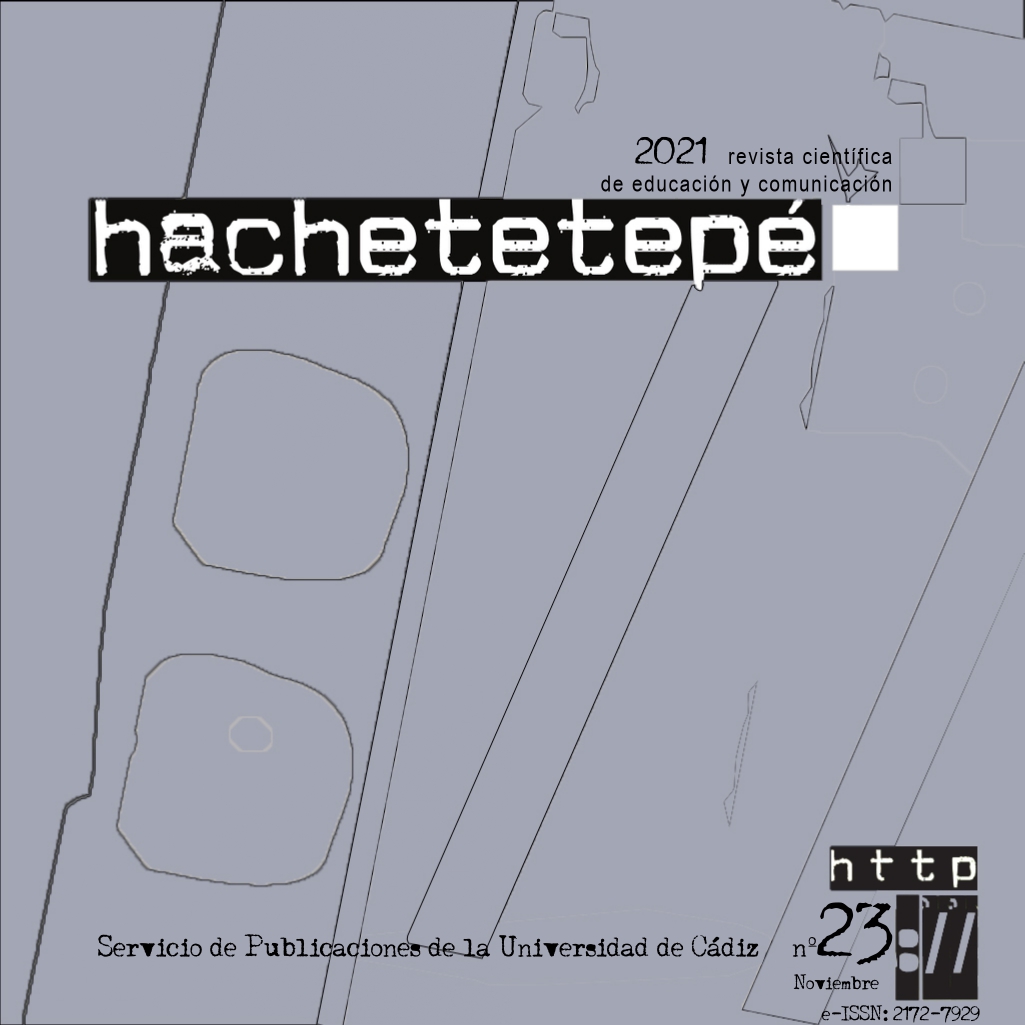Human rights violation in the media: the case of Diana on the Aqui Pe.

Downloads
- PDF (Português (Brasil)) 261
- EPUB (Português (Brasil)) 84
- VISOR (Português (Brasil))
- MÓVIL (Português (Brasil))
- XML (Português (Brasil)) 10
DOI
https://doi.org/10.25267/Hachetetepe.2021.i23.2204Info
Abstract
This article is a case study whose objective is to analyze the discursive devices used in a coverage that violates rights, correlating it to an experience of resistance action, played by civil society. More specifically, the analysis focuses on the cover of the newspaper Aqui PE, a periodical with circulation in the Metropolitan Region of Recife, which features the body of the homeless woman, Diana, with her genitalia exposed, after being beaten to death by the partner. From the contributions of the Political Economy of Communication, it is possible to observe how the Brazilian media reflects the power relations established historically, conditioning and disseminating social, political, economic and cultural practices and values. The cultural and symbolic reproduction of patriarchy, classism and racism was observed, as well as the possibilities of resisting the violation of rights in the media.Keywords
Downloads
How to Cite
License
Copyright (c) 2021 Patricia Paixão de Oliveira Leite, Ana Maria Conceição Veloso, Nataly de Queiroz Lima

This work is licensed under a Creative Commons Attribution-NonCommercial-NoDerivatives 4.0 International License.
Those authors who have published with this journal, accept the following terms:
- They will retain their copyright and guarantee the journal the right to first publication of their work, which will simultaneously be subject to the Creative Commons Attribution License . They may be copied, used, disseminated, transmitted and publicly displayed, provided that the authorship, url, and magazine are cited, and are not used for commercial purposes. No derivative works are allowed.
- They may adopt other non-exclusive license agreements for the distribution of the published version of the work (e.g., deposit it in an institutional telematic archive or publish it in a monographic volume) provided that the initial publication in this journal is indicated.
- Disseminate your work through the Internet (e.g., in institutional telematic archives or on your website) once the manuscript is accepted, which may lead to interesting exchanges and increased citations of the published work. (See The effect of open access).
Hachetetepé. Scientific journal of education and communication does not charge a fee for the submission of manuscripts or for the publication of its articles.
References
Abramo, P. (2003). Pesquisa sobre Democratização da Mídia. Fundação Perseu Abramo. https://bit.ly/3zD85iS
Aqui PE. (2017a). Flanelinha assassinada a pauladas no Recife Antigo. Edição nº 2724 de 01/09/17. Recife: Diários Associados. p.1.
Aqui PE. (2017b). Edição nº 2765 de 28 e 29/10/17. Recife: Diários Associados. p.1.
Aqui PE. (n.d.). Sobre.Facebook. https://bit.ly/2ZfxS4c
Arbex, J. (2003). Uma outra comunicação é possível (e necessária). Em D. Moraes, Por uma outra comunicação: mídia, mundialização cultural e poder (pp.385-400).Editora Record.
Ata de Audiência. (2017). IC 17014-0/8 de 6/10/2017. Recife: Ministério Público do Estado de Pernambuco.
Ávila, M. B. (2000). Feminismo e sujeito político. Revista Proposta, (84-85), 6-11.
Ávila, M. B. (2001). Textos e imagens do feminismo: mulheres construindo a igualdade. SOS Corpo.
Barros, C. F. (2001). Ética na Comunicação: da informação ao receptor. Moderna.
Chauí, M. (2006). Simulacro e poder: uma análise da mídia. Editora Fundação Perseu Abramo.
Debord, G. (1997). A sociedade do espetáculo. Contraponto Editora.
Hohlfeldt, A., Martino, L. e França, V. (Orgs.) (2001). Teorias da Comunicação: conceitos, escolas e tendências.Vozes.
Iraci, N. (2009). Mídia e racismos. Em M. Lima e T. Vicente (Orgs.), O Controle Social da Imagem da Mulher na Mídia (pp.21-36). Articulação Mulher e Mídia.
Lei n. 11.340, de 7 de Agosto de 2006. (2006). Dispõe sobre a Lei Maria da Penha. Brasília: Diário Oficial da União.
Leite, P.P.O. (2016). A mídia impressa brasileira e o discurso colonizador sobre a América
Latina: a casa grande discursivizando a senzala. [Tese de Doutorado]. Universidade Federal de Pernambuco.
Lima, V.A. (2004). Mídia: teoria e política. Editora Fundação Perseu Abramo.
Media Ownership Monitor Brasil (2017). Quem controla a mídia no Brasil? Intervozes. https://bit.ly/3EJIR6s
Mosco, V. (1996). The Political Economy of Communication. Sage Publications.
Santos, M. (1997). As cidadanias mutiladas. Em J. Lerner (Ed.), O Preconceito (pp.133-144). Imprensa Oficial do Estado.
Serrano, P. (2009). Desinformación: cómo los médios ocultan el mundo. Ediciones Península.
Stake, R.E. (2000). Case studies. In N.K. Denzin e Y.S. Lincols (Eds.), Handbook of qualitative research (pp.434-454). Sage.
Waiselfisz. J.J. (2015). Mapa da Violência 2015: Homicídio de mulheres no Brasil. ONU Mulheres. https://bit.ly/3kB0rl4
Wasco, J. (2006). Estudando a Economia Política dos Media e da Informação. Em H. Souza (Org.), Comunicação, Economia e Poder (pp.29-53).Porto Editora.






